Why Teach Your Dog to Swim: Benefits and Safety Precautions

Teaching your dog to swim not only provides them with a fun and enjoyable experience, but it also offers a range of benefits. Swimming is an excellent form of exercise that can help improve your dog's cardiovascular health and muscle strength. It can also aid in weight management and joint mobility, particularly for older dogs or those with joint issues.
Furthermore, swimming is a fantastic way to cool off during hot summer months and can be a great alternative to traditional land-based activities.
However, ensuring the safety of your dog should be a top priority. It is important to take necessary precautions, such as using a life jacket and supervising your dog at all times. Additionally, it is crucial to choose the right swimming spot and evaluate water conditions to avoid any potential hazards. By prioritizing safety and reaping the benefits of swimming, you can provide your furry friend with a delightful and healthy water experience.
A Benefits of teaching your dog to swim
:max_bytes(150000):strip_icc()/swimming-dog-607804786-2000-1e9ed9caad174269a221629d2a46e445.jpg)
Teaching your dog to swim offers numerous benefits for their overall well-being. First and foremost, swimming is a great form of exercise that can help keep your dog physically fit. It is a low-impact activity that puts less strain on their joints, making it ideal for dogs with arthritis or mobility issues. Swimming also helps improve cardiovascular health and builds endurance. Additionally, swimming provides mental stimulation and helps relieve stress, as dogs enjoy the sensory experience of being in the water. It can also be a great way to bond with your furry friend and strengthen your relationship. Moreover, swimming is a valuable life skill that can potentially save your dog's life in water-related emergencies. So, by teaching your dog to swim, you're promoting their overall health and safety.
B Safety precautions for teaching your dog to swim

When teaching your dog to swim, it is important to take certain safety precautions to ensure their well-being. First and foremost, it is crucial to always supervise your dog while they are in the water. Even if your dog is a strong swimmer, accidents can happen, so being present and attentive is key.
Additionally, start with shallow water and gradually increase the depth as your dog becomes more confident. This allows them to build trust and develop their swimming skills at their own pace.
Make sure to introduce your dog to swimming in a calm and controlled environment. Avoid areas with strong currents or waves, as these can be overwhelming for a beginner swimmer.
Lastly, consider using a dog life jacket, especially for dogs who are still learning to swim. This provides extra buoyancy and promotes water confidence while ensuring their safety.
By following these safety precautions, you can create a positive and safe learning experience for your dog to enjoy the benefits of swimming.
Choosing the Right Swimming Spot for Your Dog
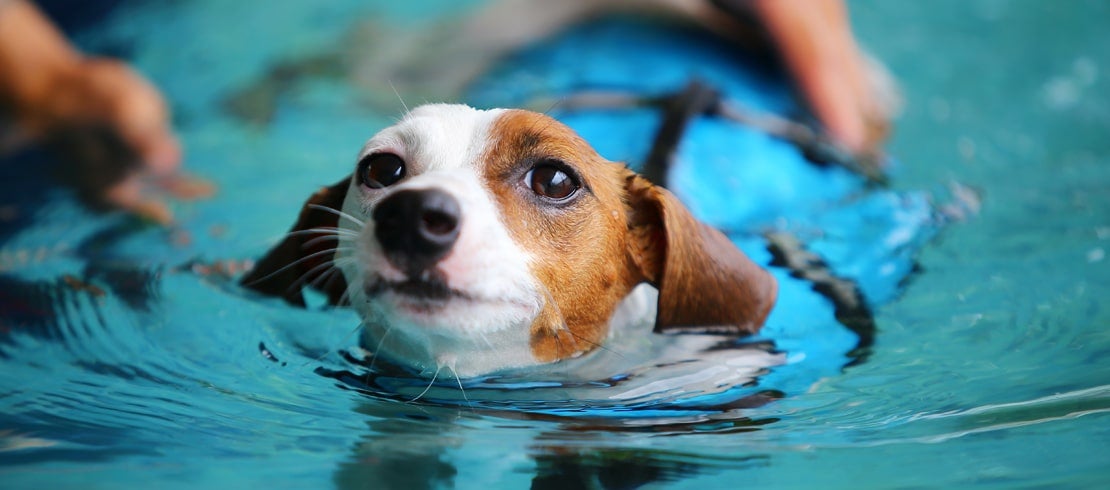
When choosing a swimming spot for your dog, it's important to consider the safety and suitability of the area. Take into account the water conditions and the swimming areas available. Assess the depth of the water and check for any potential hazards such as strong currents or sharp objects. If you're opting for an outdoor swimming spot, make sure it's dog-friendly and allows pets. Additionally, consider indoor swimming options like doggy pools or hydrotherapy centers, which have controlled environments and are ideal for dogs who are just starting to learn how to swim. By carefully selecting the right swimming spot, you can ensure a safe and enjoyable experience for your furry friend.
A Evaluating water conditions and swimming areas for safety

When teaching your dog to swim, it is crucial to evaluate the water conditions and choose a safe swimming area. First and foremost, consider the depth of the water. Dogs should be able to touch the ground with their front paws, allowing them to feel secure. Additionally, it is important to assess the current and water flow. Avoid strong currents or areas with rough waves, as they can be overwhelming for dogs. Look for calm, clear, and shallow areas that are free from debris or potential hazards. Furthermore, pay attention to the presence of wildlife, such as ducks or fish, as they may distract or excite your dog. By carefully evaluating water conditions and swimming areas, you can ensure the safety and enjoyment of your furry friend.
B Considering indoor and outdoor swimming options

When it comes to teaching your dog to swim, you have the option of choosing between indoor and outdoor swimming environments. Each option has its own set of advantages and considerations.
Indoor swimming pools can be a great choice if you want to provide a controlled and safe environment for your dog to learn and practice swimming. These pools are typically heated, which can be beneficial if your dog prefers warmer water. Indoor facilities also offer the advantage of being open year-round, allowing you and your dog to enjoy swimming regardless of the weather conditions outside.
On the other hand, outdoor swimming locations like lakes, rivers, and the ocean can offer a more natural and adventurous experience. Dogs can enjoy the opportunity to swim in a larger space and explore their surroundings. However, it is important to carefully evaluate the water conditions and ensure that the area is safe for your dog, free from strong currents or dangerous wildlife.
Ultimately, the choice between indoor and outdoor swimming options will depend on your dog's preferences and the level of safety and convenience you desire. Whether you choose the controlled environment of an indoor pool or the natural beauty of an outdoor location, both options can provide a fun and beneficial swimming experience for you and your furry friend.
Introducing Your Dog to the Water: First Steps
When introducing your dog to the water for the first time, it's important to take it slow and make the experience positive. Begin by finding a shallow area where your dog can comfortably wade in. Allow your dog to approach the water at their own pace, using treats and praise to create a positive association. You can also consider using a favorite toy to entice them to come closer to the water. Once your dog is comfortable near the water's edge, encourage them to take a few steps in, gradually increasing the depth. Be patient and supportive, providing reassurance throughout the process. As your dog becomes more confident, you can start introducing basic commands for swimming, such as "come" and "stay." Remember to always make the experience fun and rewarding for your furry friend.
A Getting your dog comfortable with water

To get your dog comfortable with water, it's important to start slow and gradually introduce them to the water. Begin by bringing your dog to a shallow area where they can touch the ground with their paws. Allow them to explore and get used to the sensation of the water. Use positive reinforcement and treats to create a positive association with being in the water. If your dog seems hesitant or fearful, don't force them. Instead, take small steps and give them time to adjust at their own pace. Encourage them with praise and rewards when they show signs of comfort. Remember, patience is key when teaching your dog to swim.
B Introducing basic commands for swimming

When introducing your dog to swimming, it's important to teach them some basic commands to ensure their safety and enjoyment in the water. Start by teaching your dog the command "come" or "here" to encourage them to swim towards you. This command is essential for calling them back if they swim too far or encounter any dangers.
Another crucial command is "stay" or "wait." This will come in handy when you want your dog to stay on a specific spot in the water or wait for you to give them further instructions.
Lastly, consider teaching your dog the command "out" or "exit" to teach them how to leave the water safely. This is important if your dog accidentally falls into deep water or if they need to end a swimming session.
By introducing these basic commands, you can communicate effectively with your dog while they are swimming and ensure their safety and enjoyment in the water.
Swimming Techniques and Exercises for Your Dog
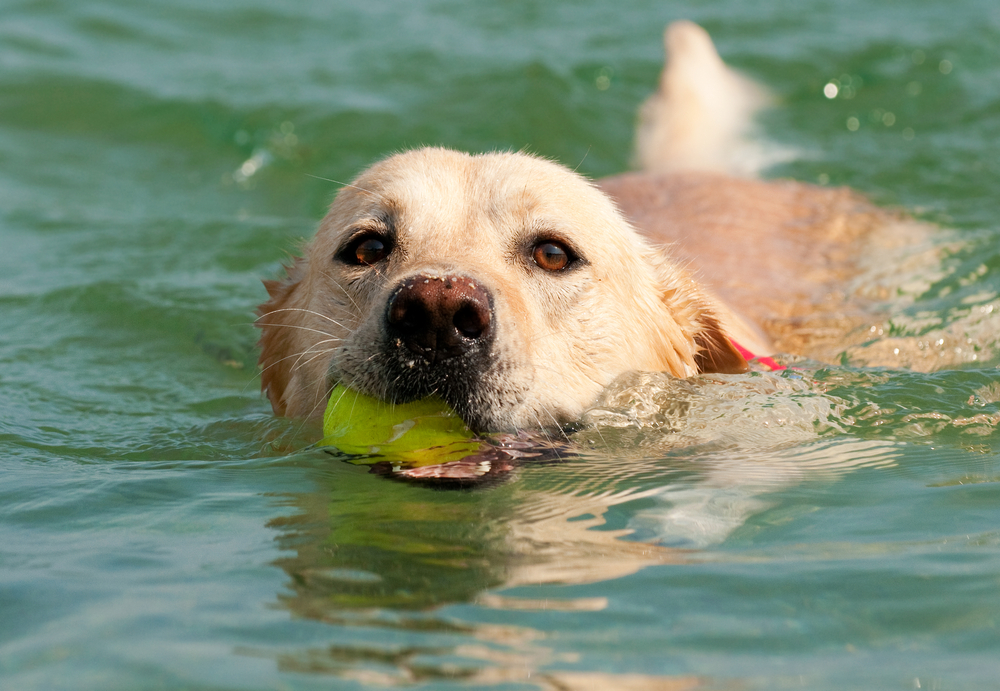
When teaching your dog to swim, it's important to focus on proper swimming techniques and exercises. Just like humans, dogs need to learn how to paddle and float in the water. Start by gently guiding your dog's legs in a paddling motion, encouraging them to use their front and back legs simultaneously. This will help them stay afloat and move through the water more efficiently.
Once your dog is comfortable with paddling, you can introduce exercises to improve their endurance and strength. Retrieve games in the water are a great way to combine exercise and fun. You can toss a floating toy and encourage your dog to swim out and bring it back to you. This not only improves their swimming skills but also provides mental and physical stimulation.
Remember to always keep an eye on your dog's energy level and make sure they don't overexert themselves. Gradually increase the duration and intensity of the exercises as your dog becomes more comfortable and confident in the water.
A Teaching your dog to paddle and float
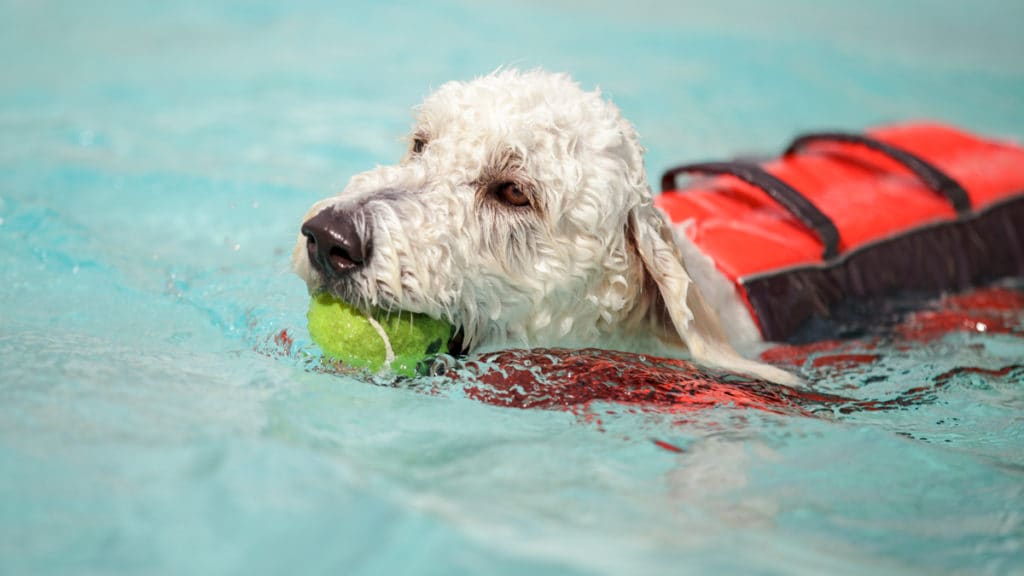
Teaching your dog to paddle and float is an essential skill for them to become confident swimmers. Start by gently supporting your dog under their belly, allowing their back legs to paddle in the water. Encourage them with positive reinforcement and praise. Gradually release your support and let them practice on their own. It's important to remember that dogs have different swimming styles, so be patient and let them find their own rhythm. To teach your dog to float, support them under their chest and allow their back end to float naturally. This will help them develop the muscle memory needed for buoyancy. With practice, your dog will become proficient in paddling and floating, making their swimming experience enjoyable and safe.
B Fun swimming exercises to improve endurance and strength

When it comes to teaching your dog to swim, it's not just about getting them comfortable in the water and ensuring their safety. Swimming can also serve as a great form of exercise for your furry friend. In fact, there are various fun swimming exercises that can help improve their endurance and strengthen their muscles.
One exercise is to have your dog swim against the current. This can be done in a natural body of water with a current or using a resistance device in a pool. By swimming against the current, your dog will have to work harder, which will boost their endurance and overall fitness.
Another exercise is to incorporate toys or objects that can be retrieved in the water. Throwing a toy into the water and encouraging your dog to swim and retrieve it can not only enhance their swimming skills, but also engage their muscles and improve their strength.
Lastly, you can set up a mini-obstacle course in the water for your dog to navigate. This can include floating platforms or hoops that they have to swim through. By going through these obstacles, your dog will not only have a great time, but also work their muscles and build strength.
Remember, always start with short swimming sessions and gradually increase the duration and intensity of the exercises. Keep an eye on your dog's energy levels and provide breaks when needed. With consistent practice and fun exercises, your dog will become a stronger and more proficient swimmer.
Water Safety Equipment for Dogs

Water safety equipment is an essential part of teaching your dog to swim, ensuring their safety and providing you with peace of mind. One important piece of equipment is a life jacket designed specifically for dogs. These jackets are buoyant and provide extra support, keeping your furry friend afloat in water. Look for a jacket with a handle on the back, as it allows you to easily lift your pup out of the water if needed. Additionally, consider investing in a floating toy or a floating device that attaches to your dog's body to provide extra support while they swim. These safety tools can greatly reduce the risk of accidents and help your dog enjoy their swimming experience to the fullest.
A Finding the right life jacket for your dog
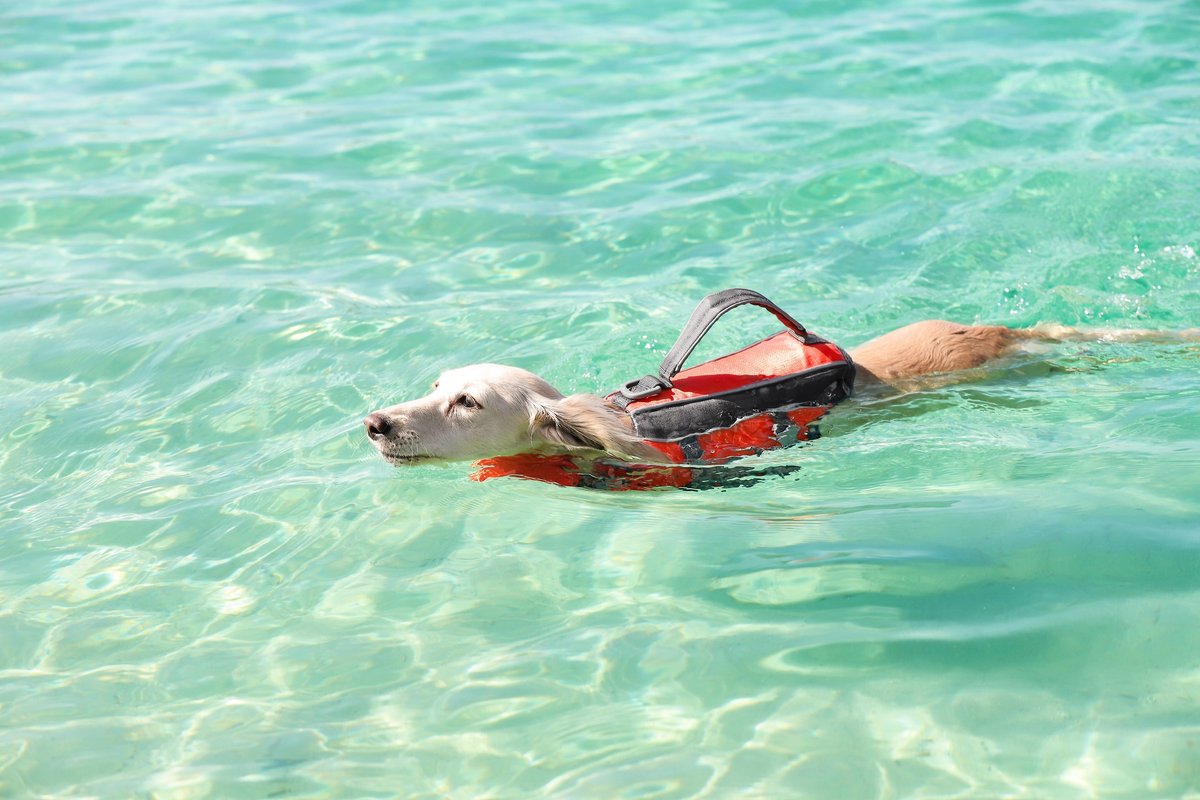
When it comes to water safety for your dog, finding the right life jacket is crucial. Not all dogs are natural-born swimmers, and even those who are may tire easily or encounter unexpected challenges in the water. That's where a life jacket comes in handy.
When selecting a life jacket for your dog, there are a few key factors to consider. First and foremost, choose a life jacket that is the appropriate size and fit for your dog. It should be snug, but not too tight, allowing for easy movement and comfort. Additionally, look for a life jacket that is made from durable and buoyant materials, with secure fastenings to ensure it stays in place.
It's also important to consider any specific features that may suit your dog's needs. For example, some life jackets include handles on the back, making it easier to lift your dog out of the water if needed. Reflective strips are another helpful feature, enhancing visibility in low light conditions.
Remember, a life jacket is not a substitute for supervision and monitoring. It is meant to provide an extra layer of safety and buoyancy for your dog while swimming. With the right life jacket, you can have peace of mind knowing that your furry friend is protected in the water.
B Additional safety gear for swimming

When it comes to keeping your dog safe in the water, additional safety gear can provide an extra layer of protection. One essential piece of equipment is a dog life jacket. These jackets are designed to provide buoyancy and keep your dog afloat, especially if they tire out or encounter rough conditions. Look for a life jacket that fits securely and has adjustable straps for a comfortable fit.
Another useful safety gear for swimming is a waterproof GPS tracker. This device can be attached to your dog's collar and allows you to keep track of their location in case they get disoriented or lost while swimming. It provides peace of mind and ensures that you can quickly find and retrieve your furry companion if necessary.
Additionally, consider investing in a sturdy leash or harness that is specifically designed for water activities. These will help you maintain control of your dog while swimming and prevent them from straying too far from you.
By utilizing these additional safety measures, you can ensure that your dog stays safe and secure during their swimming adventures.
Fun Water Activities to Enjoy with Your Dog
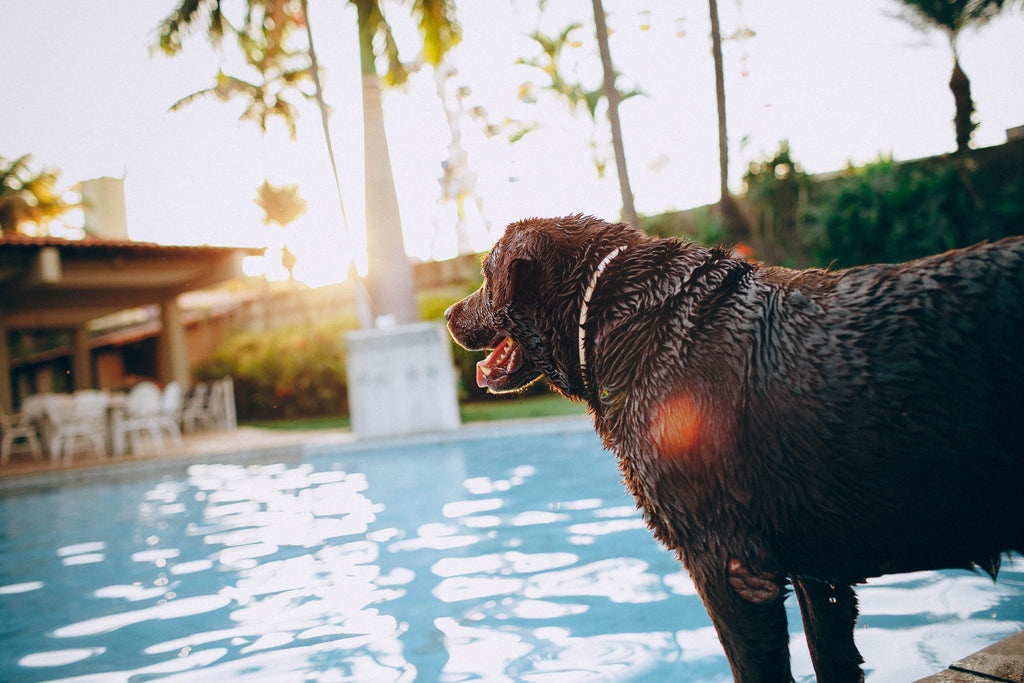
When it comes to enjoying the water with your furry friend, there are plenty of fun activities to try. One popular option is playing fetch in the water. This not only allows your dog to cool off and exercise, but it also adds an element of excitement as they retrieve the toy from the water. Dock diving is another thrilling water sport that many dogs love. This involves jumping off a dock into a pool of water and can be a great way to test your dog's agility and bravery. Besides these activities, you can also consider taking your dog on a leisurely swim or even try some water-based training exercises. Whatever activity you choose, always prioritize your dog's safety and enjoyment. So get out there and make a splash with your furry friend!
A Fetch and retrieving games in the water
When it comes to water activities for dogs, playing fetch and retrieving games can be a great way to have fun while also building their swimming skills. These games not only engage your dog mentally and physically but also help them become more confident in the water.
To start, choose a floating toy that is easily visible and easy for your dog to grab hold of. Stand in shallow water and throw the toy, encouraging your dog to swim out and retrieve it. Once they have grasped the concept, you can gradually increase the distance.
Remember to always praise and reward your dog for their efforts. These games not only provide exercise but also create a strong bond between you and your furry friend. So get ready to make a splash and enjoy some quality time together in the water!
B Dock diving and other water sports for dogs

Dock diving is an exhilarating water sport that has gained popularity among dog owners. In this sport, dogs jump from a dock or a platform into a body of water, aiming for distance or height. It requires strength, coordination, and a love for water.
To participate in dock diving, your dog should have mastery of basic swimming skills and be comfortable jumping into the water. Training is essential to ensure your dog's safety and build their confidence. Start by teaching them to jump off a low platform and gradually increase the height as they progress.
Other water sports that dogs can enjoy include water retrieving competitions and underwater retrieval. These activities not only provide mental stimulation and physical exercise but also enhance the bond between you and your furry friend.
Remember to always prioritize your dog's safety and consult with professionals to ensure your dog is ready and properly trained for these water sports.
Tips for Ensuring Your Dog’s Safety in the Water
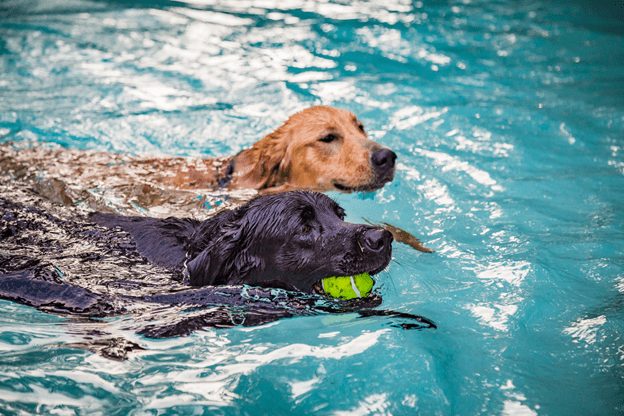
When teaching your dog to swim, it is crucial to prioritize their safety in the water. Here are some important tips to keep in mind:
- Monitoring your dog's behavior and stamina: Pay close attention to your dog's body language and overall energy level while they are in the water. Watch for signs of fatigue or distress, and take breaks as needed.
- Supervision and emergency preparedness: Always supervise your dog while they are swimming, even if they are experienced. Ensure that you have a plan in case of an emergency, such as knowing the location of the nearest veterinary clinic or pet emergency services.
By following these tips, you can ensure that your dog stays safe and enjoys their water adventures to the fullest. Remember, their safety should always come first.
A Monitoring your dog’s behavior and stamina
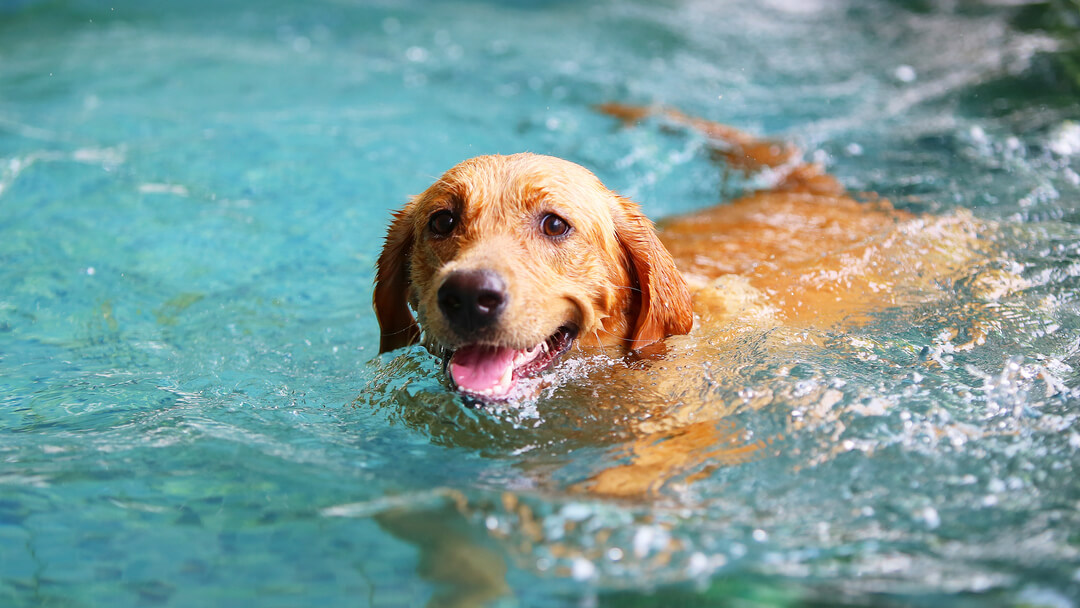
When teaching your dog to swim, it is important to monitor their behavior and stamina throughout the process. Every dog is unique and may have different energy levels and comfort levels in the water.
Keep a close eye on your dog's behavior while swimming. Look for signs of exhaustion, such as heavy panting, slowing down, or struggling to keep their head above water. If you notice any of these signs, it's important to take a break and let your dog rest to prevent overexertion or potential accidents.
Additionally, pay attention to your dog's stamina. Some dogs may have a natural affinity for swimming and can swim for longer periods, while others may tire quickly. It's essential to respect your dog's limits and gradually increase their swimming time and distance as they build their strength and endurance.
By monitoring your dog's behavior and stamina, you can ensure a safe and enjoyable swimming experience for both you and your furry friend.
B Supervision and emergency preparedness

When teaching your dog to swim, it is crucial to provide constant supervision and be prepared for any emergencies that may arise. Supervision is essential to ensure your dog's safety and wellbeing in the water.
Always keep a close eye on your dog while they are swimming. This means staying within arm's reach and actively watching their movements. Remember that even dogs who are confident swimmers can get tired or encounter unexpected challenges in the water.
In addition to supervision, it is vital to be prepared for emergencies. Have a plan in place in case your dog gets into trouble while swimming. This may include knowing how to perform CPR on a dog, having a first aid kit nearby, and being familiar with the location of the nearest veterinary clinic.
By providing constant supervision and being prepared for emergencies, you can ensure that your dog's swimming experience is not only enjoyable but also safe.
Common Mistakes to Avoid When Teaching Your Dog to Swim
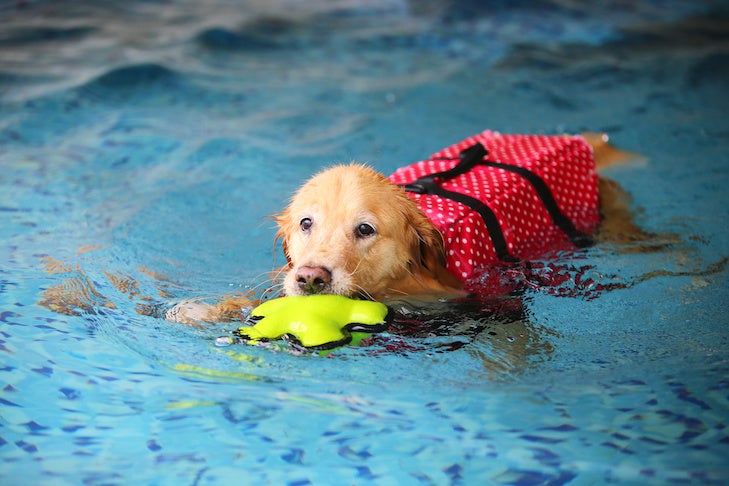
Common Mistakes to Avoid When Teaching Your Dog to Swim:
- Rushing the learning process: One common mistake is trying to rush the process of teaching your dog to swim. Remember, each dog learns at their own pace, and it's important to be patient. Gradually introduce your dog to the water and take small steps towards swimming. Pushing your dog too fast could lead to fear or anxiety, making the learning experience negative for them.
- Neglecting post-swimming care: After a swim, it's crucial to provide proper post-swimming care for your dog. Neglecting this step can lead to health issues such as ear infections or skin irritations. Always dry your dog's ears thoroughly and rinse off any chlorine or saltwater from their coat. Additionally, be mindful of the temperature and provide a warm environment for your dog to prevent them from getting chilled.
By avoiding these common mistakes, you can ensure a positive and enjoyable swimming experience for both you and your furry friend. Follow the outlined steps, prioritize safety, and remember to have fun while teaching your dog to swim.
A Rushing the learning process

When teaching your dog to swim, one common mistake to avoid is rushing the learning process. It's important to remember that every dog is different and may progress at their own pace. Pushing them too quickly can lead to frustration and fear, making it more difficult for them to enjoy the water.
Take your time and start with small steps, gradually introducing your dog to the water. Begin with shallow areas where they can feel confident and gradually move to deeper water. Use positive reinforcement and rewards to build their confidence as they become more comfortable in the water.
By taking your time and being patient, you can help your dog develop a positive association with swimming and ensure that they enjoy their water adventures for years to come.
B Neglecting post-swimming care

B Neglecting post-swimming care:
After a fun swim session with your furry friend, it's crucial not to neglect the post-swimming care your dog needs. Neglecting post-swimming care can lead to potential health issues for your dog. One common mistake is failing to dry your dog thoroughly. Leaving your dog damp can result in skin irritations and hotspots. Make sure to use a towel to dry their fur, paying extra attention to their ears, paws, and any folds in their skin.
Additionally, neglecting to clean your dog's ears after swimming can lead to painful ear infections. Using a veterinarian-approved ear cleaning solution, gently wipe out any excess water and debris from their ears. It's also essential to rinse off any chlorine or saltwater from their fur to prevent skin dryness and irritation.
Lastly, don't forget to offer your dog fresh water to drink after swimming to avoid dehydration. By prioritizing post-swimming care, you can ensure that your dog remains healthy and happy after their aquatic adventures.
Conclusion
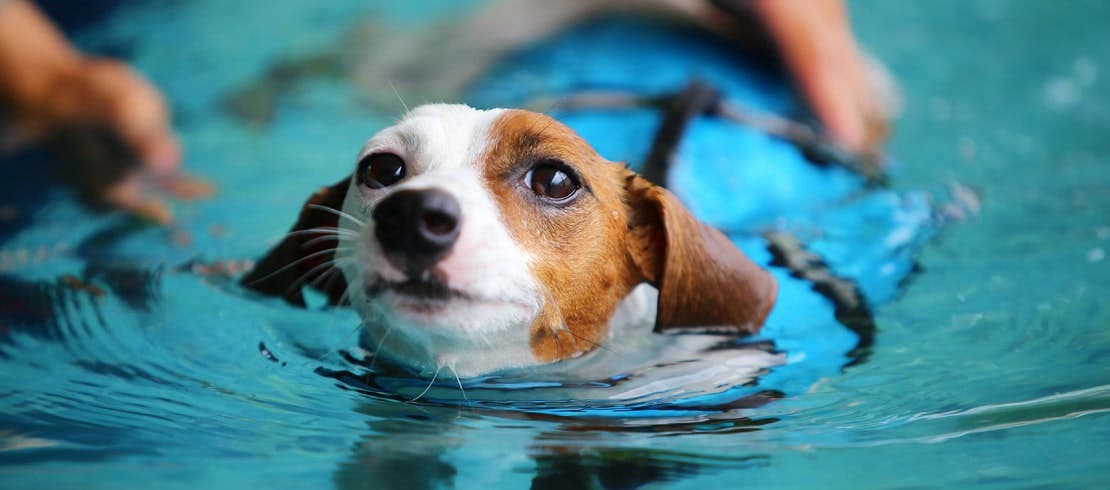
In conclusion, teaching your dog to swim can provide numerous benefits and opportunities for fun and bonding. Not only does swimming help improve your dog's physical fitness and overall health, but it can also be a great mental stimulation and stress-reliever for them. However, it is crucial to prioritize safety when introducing your dog to the water. Evaluating water conditions, choosing the right swimming spot, and using appropriate safety equipment are essential precautions to take. By gradually introducing your dog to water and teaching them basic commands, you can build their confidence and ensure a positive swimming experience. Remember to monitor your dog's behavior and stamina, supervise them at all times, and be prepared for any emergencies. Avoid rushing the learning process and make sure to provide proper care and post-swimming maintenance. So, go ahead and enjoy the water adventures with your furry friend knowing that you have taken the necessary precautions for a safe and enjoyable experience.
A Recap of the benefits of teaching your dog to swim
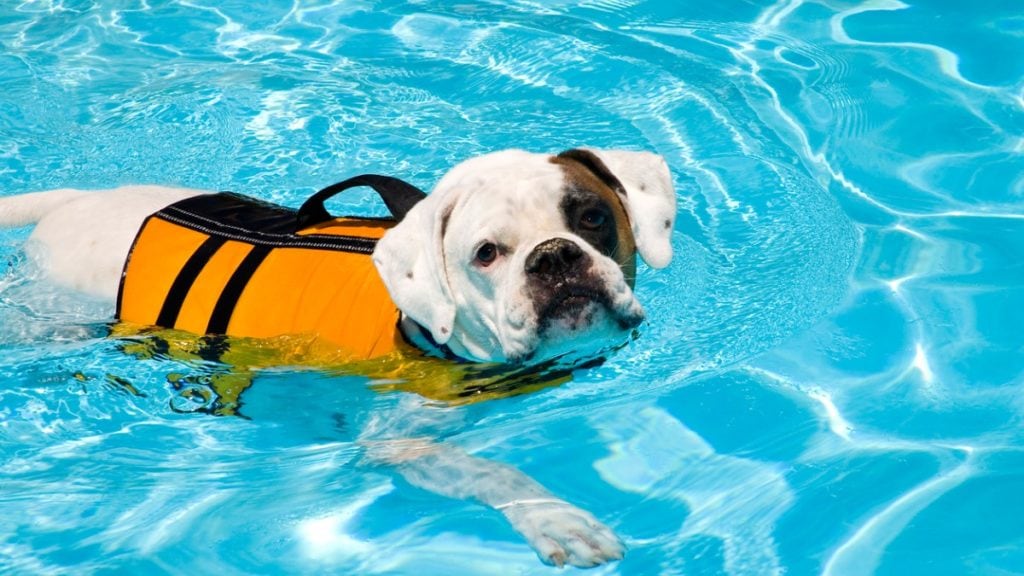
Swimming is not only a fun activity for dogs, but it also offers numerous benefits. Teaching your dog to swim can improve their overall physical health and mental well-being. Regular swimming exercises can help your dog maintain a healthy weight, strengthen their muscles, and improve cardiovascular fitness. Swimming is also a great way to provide low-impact exercise for older or arthritic dogs. Additionally, swimming can help build your dog's confidence and provide mental stimulation. It can enhance their coordination and balance while engaging their senses in a new environment. So, teaching your dog to swim is a win-win situation, promoting their physical and mental health while enjoying quality time together in the water.
B Final thoughts and encouragement for water adventures with your furry friend

When it comes to teaching your dog to swim, remember to have patience and celebrate small victories along the way. Each dog has its own pace of learning, so it's important not to rush the process. With consistent practice and positive reinforcement, your furry friend will become more comfortable and confident in the water.
Water adventures can create lasting memories and provide a fun bonding experience for you and your dog. Remember to always prioritize their safety by closely monitoring their behavior and stamina. Be prepared for any emergencies that may arise by having the necessary safety equipment on hand.
With the right precautions and techniques, teaching your dog to swim can be a rewarding and enjoyable journey. So, get ready to dive in and create unforgettable water adventures with your furry friend!




0 Comments